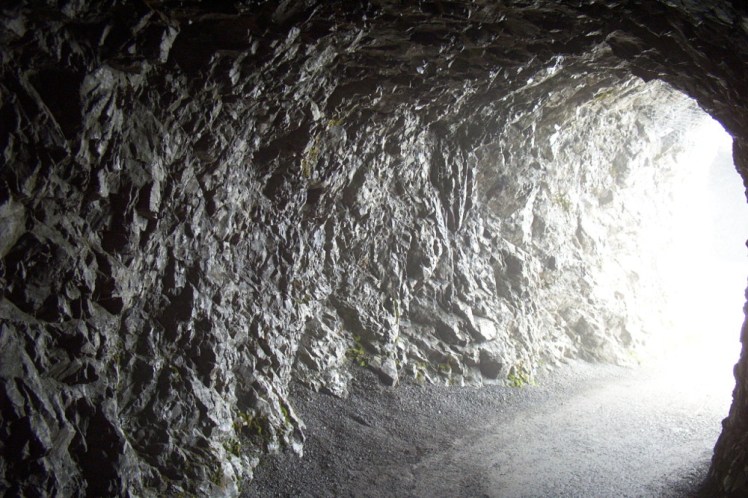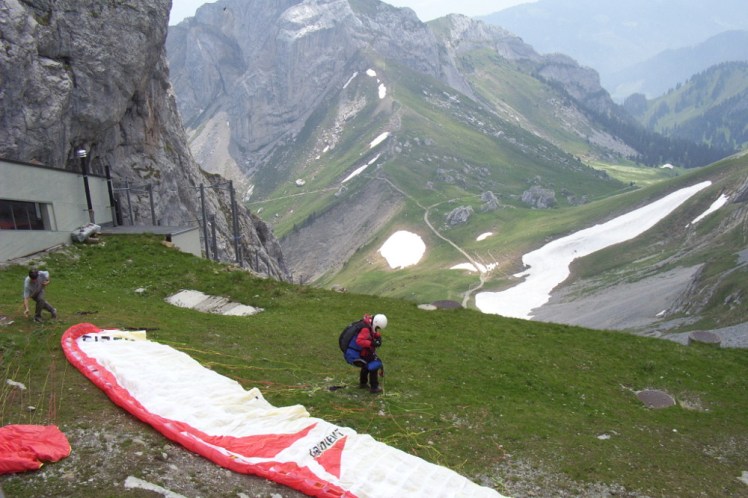Of all the stuff I did on my year abroad in Switzerland all those years ago, the Pilatus Golden Round Trip was probably my favourite. It’s Switzerland in microcosm, the best of the entire country all in one beautiful day.
You start out in Luzern, which I’m obstinately spelling the German way, even though in English we spell in Lucerne. I lived in Neuchâtel, out in the French-speaking west of Switzerland so I had a two-hour two-train journey to Luzern before it even began. I had to go into the ticket office at Luzern HB to get the ticket – as it’s not a simple direct journey, you can’t just buy it from a ticket machine. Back on 24th of June 2006, which is when I went, with my demi-tariff (half-fare card), it cost 41.80fr. These days there are so many options online that I’m not certain but it looks like it would be 52.20fr for the full Luzern-Kriens-Pilatus-Alpnachstad-boat back to Luzern, or 103.60 without the demi-tariff. Oanda says that’s £42.27 or £83.88 ($58 / $115.14) by today’s exchange rate.
I took the trolleybus from outside the main station to the gondola station at Alpnachstad. Back then it was Bus 1 from Stand 1 but it seems these days you can also take the S4 local train from platform 14 and go two stops in the direction of Wolfenschiessen. Either way takes about half an hour.


Once I arrived at Kriens with next to no information about what I was doing, and feeling my way along, I went into the gondola station, where I was given a proper ticket in exchange for showing my pink and blue train ticket. If you’ve ever been skiing, you’ll know about sticking the card into the turnstile, it whirring it in and out half a dozen times and then opening the gate for you. I took the gondola halfway up the mountain to Fräkmüntegg and then transferred onto the full-size cable car for the journey to the summit. It was still fairly early and I had the cable car completely to myself. It only takes five minutes and the driver used those five minutes to chat to me in French. I liked to talk in one of Switzerland’s official languages, even if it was the wrong one for the area I was in.

It was cloudy at the top but not so cloudy that I couldn’t see how rocky it all was. I’ve been up mountains on cable cars before and it’s only in Switzerland that I’ve found the summits sheer-sided with facilities balanced on a knife-edge. There’s a hotel up here, complete with conference facilities, a circular restaurant and sun terrace, and my experience is that there’s always a mountain-top cafe with a view. According to my diary, I didn’t go inside and have a drink or snack.

There are a few short walking routes – well, routes that let you explore the summit a little, some of them going through caves and galleries to give you views out the other side and to various viewing platforms. One of them led out to a bit of meadow from which paragliders were launching themselves out into the sky. I hadn’t yet done any paragliding back then but looking at the pictures now, it seems you’d have to fly upwards and upwards to clear the peaks around you before you could start getting anywhere., I think it’s not a mountain I’d personally choose to jump off of.

On a clear day, you should be able to see Lake Luzern really well. You may not be surprised to hear that I routinely call it Vierwaldstättersee, the lake of the four forest cantons. This is where Switzerland began, at the Rütli meadow and the four forest cantons of Uri, Schwyz, Unterwalden (now Obwalden and Nidwalden) and later, Luzern. The lake is an awkward starfishy shape, with arms pointing in all directions, presumably various glacial-carved valleys that are now flooded. Unfortunately, it was hidden underneath the cloud.

I don’t think I stayed up long, probably because it was cloudy and chilly. My way down wasn’t back via the various aerial cableways: I was taking the steepest cogwheel railway in the world down to Alpnachstad. It’s just one carriage, divided into compartments so each one can have a fairly flat floor, and with the seats angled. I sat right at the front on the backwards facing seats, reasoning that I could turn around and not have anyone blocking my view. Shortly after we set off, the driver pointed out mountain goats to me, since I was basically hanging over his head. I’ve seen alpensteinbock in wildparks but I’ve never seen them in the wild. My camera from those days had no zoom whatever so I guess they must have been pretty close for me to get as good photos.

It’s a slow trundling journey. With the gradient reaching 48% in places, this would be beyond impossible for a normal train so this one uses a cogwheel that rolls across a track to haul it uphill or grope its way downhill. If you go at any speed, it might as well be in freefall. I see on Facebook and occasionally on Twitter clickbait videos advertising various mountain railways and they’re always speeded up to make them look like rollercoasters. Real mountain railways are sedate and give you plenty of time to enjoy the view. We stopped once for cows crossing the track and we stopped a second time to wait for the other train to come up. It’s single track most of the way, except this sliding plate here that allows the two trains to cross. As it did so, the woman next to me said “Ooooh!” and the driver laughed.

The view was improving as we descended. Cloud became mist became haze and by the time we reached the station at Alpnachstad, it was almost a nice day. We all disembarked from the train and crossed the road to the boat pier. Of course, you could just take the ordinary train back to Luzern from here but who’d want to do that when they’ve got a steamer as part of their ticket? Today there’s a four-lane road separately the station from the pier and I presume there’s an underpass somewhere. In fact, there was a road and underpass in 2006, according to my diary. As per the usual Swiss efficiency, the steamer was already there and it waited just long enough for us to get off the train and how to figure out how to get to the pier before it steamed off up the lake.


I always like a boat trip. It’s one of my favourite things to do when I’m travelling, and this was even more exciting because this was a steam-powered paddle steamer. Unterwalden was built in 1902 and renovated between 2008 and 2011 and it’s the only steamer in Luzern’s fleet that’s able to come into the Alpnachstad corner of the lake. It’s a proper steamer, no electric motor hiding underneath. It’s got a proper boiler and proper paddles thrashing madly at water level. You can look through the side windows and watch them going and then you can also watch the pistons turning in the middle of the inside deck. It’s great fun, if you’re into copious amounts of steel and brass and old-fashioned shine.

By now the sun had come out. I never got my ticket checked the entire hour and a half journey because I never sat down and stayed still. It’s 62m long, with two decks and can take 800 passengers, so there’s plenty of room to roam around. I liked to stand at the back and appreciate the flag blowing in the wind, red flag against blue water.


Lake Luzern is such a perfect Swiss lake – nice and blue and surrounded by high pointy mountains. It’s a delight to sail on, especially with the blue sky, sunshine and an airship drifting gently overhead. That made six different forms of transport that day – train, bus, gondola, cable car, cog railway and steamer and we returned happily to Luzern by mid to late afternoon.


But my day wasn’t over! I’d inadvertently chosen the day of the Eidgenössische Musikfest – well, one of them. It’s a music festival that lasts a few days and it sprawls itself over half the city. There was an orchestra right there on the quayside and various smaller groups and bands scattered around Luzern, including a jazz band in the lower level of the main station, being watched by a lot of people at long tables that looked like a proper German beer festival. Strictly speaking, you’re supposed to pay for entrance to this festival, I think. It’s not happening in 2021, obviously, but they’d got as far as planning it. It was supposed to happen in Interlaken and a four day pass was going to be 50CHF (£40/$56). So I guess the 2006 one was paid as well but I stepped off a boat into the middle of it and had no idea what was going on until I got back home that evening and looked it up.

Unsurprisingly, given the event going on, my train out of Luzern was packed that evening. I’ve pointed out in my diary that “I had ten minutes to change at Olten for the SBB from St Gallen heading for Lausanne” which implies that changing trains was a hasty and stressful thing, whereas ten minutes is plenty of time when Swiss public transport is so efficient. Olten is a fairly busy rail junction but it’s not a particularly big station and they make it very clear which platform you should be on, so I have no idea what I was passive-aggressively complaining about. I got off the train back in Neuchâtel at 10.34 that night after a very long, very varied and very beautiful day.